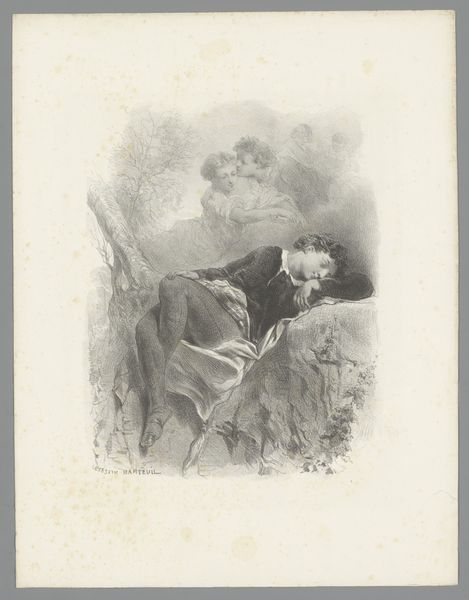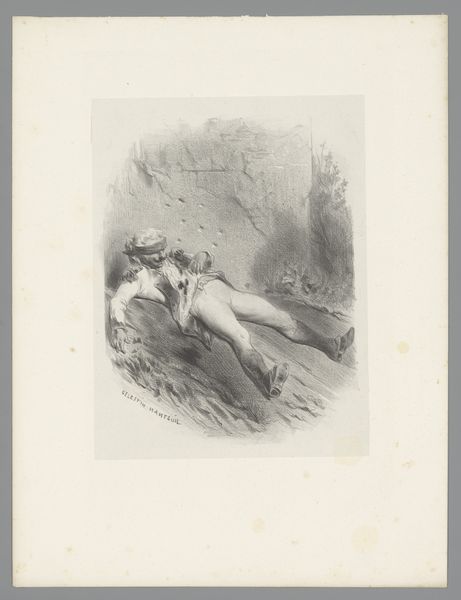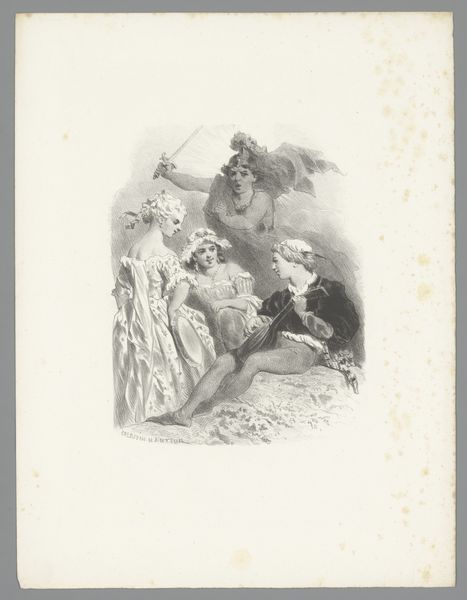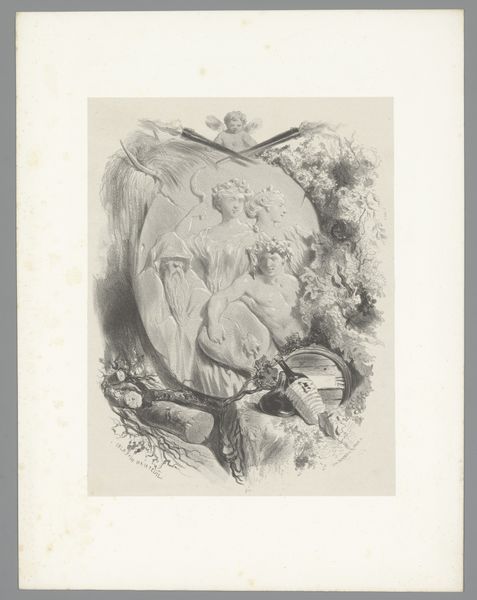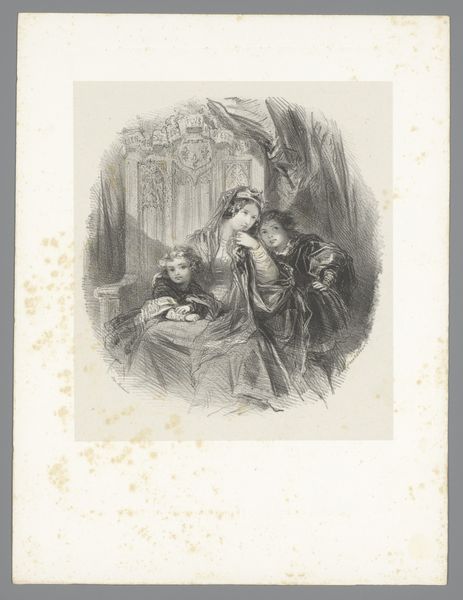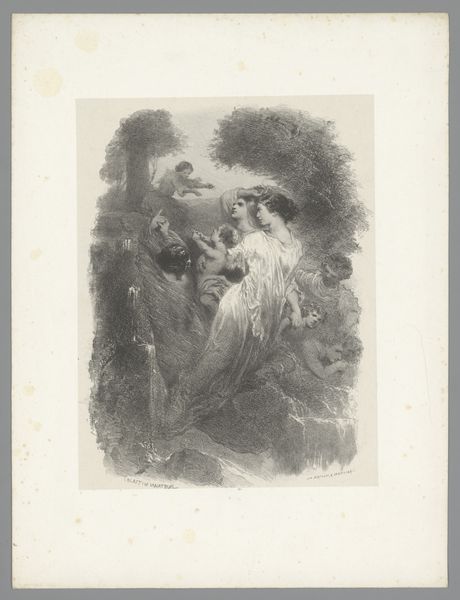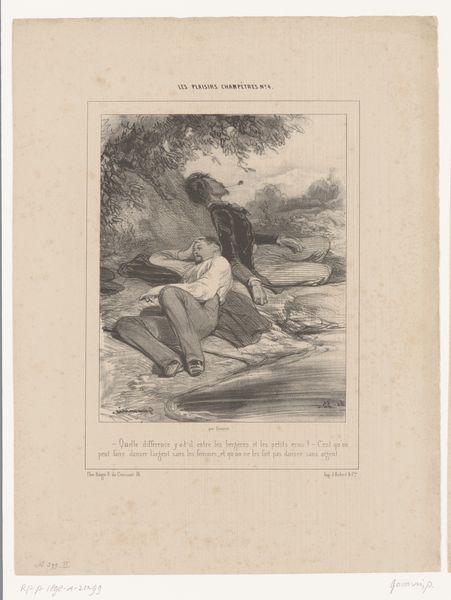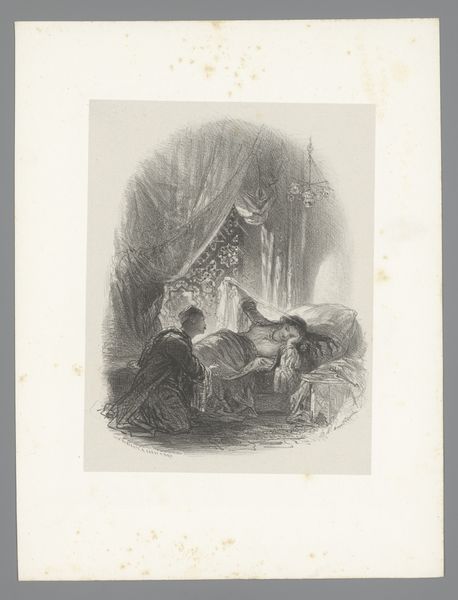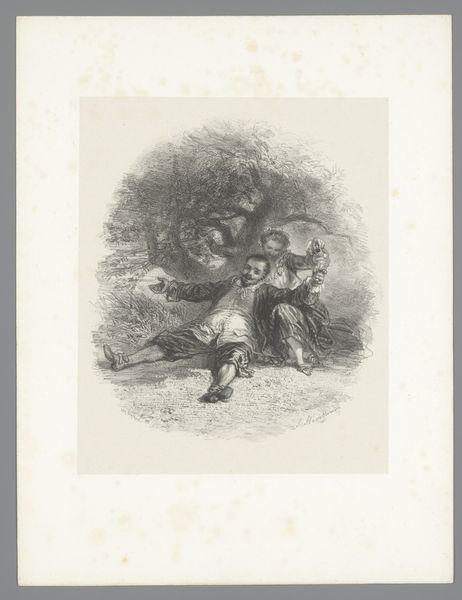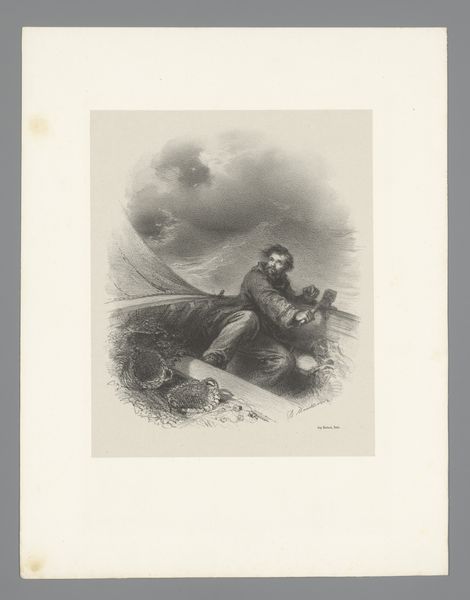
Dimensions: height 361 mm, width 277 mm
Copyright: Rijks Museum: Open Domain
Célestin Nanteuil created this lithograph of Icarus with broken wings in the 19th century. The lithographic process is key to understanding this print. Unlike traditional engraving, where lines are cut into a hard surface, lithography is based on the principle that oil and water repel each other. The artist draws on a stone or metal plate with a greasy crayon, then applies ink, which adheres only to the drawn areas. It’s a planographic process, meaning the surface remains flat, allowing for a more fluid and painterly effect than you might get with an incised line. Consider the labor involved. The artist had to be skilled not only in drawing, but also in the chemistry of lithography. The printing itself would have been a collaborative process, involving the artist and a skilled printer. This print, therefore, is a testament to both artistic vision and skilled craftsmanship, blurring the lines between high art and the crafts.
Comments
No comments
Be the first to comment and join the conversation on the ultimate creative platform.
